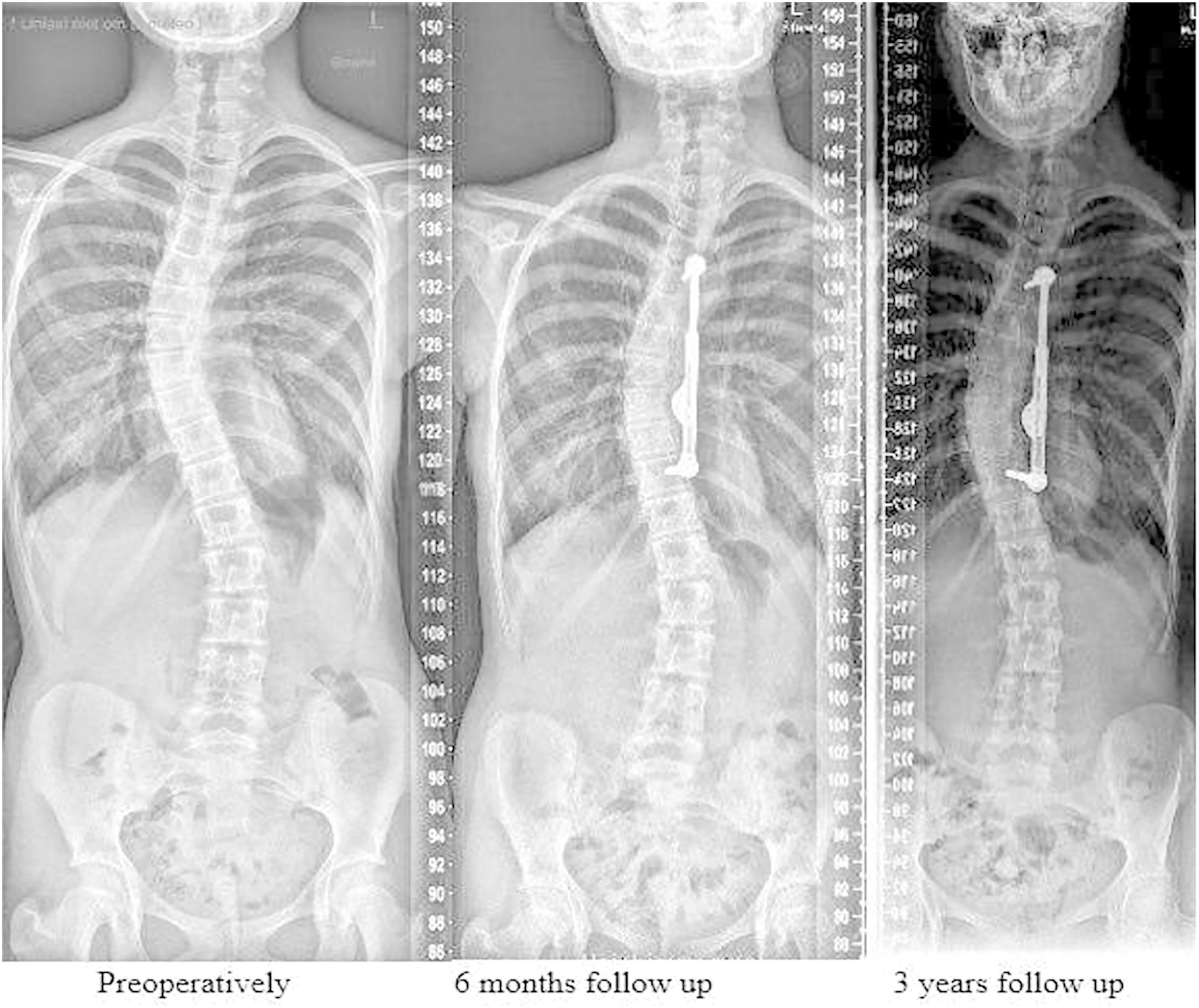As we continue to evaluate methods of treating adolescent idiopathic scoliosis (AIS), growth modulation has become a hot topic. Such techniques aim at curve correction without the need for fusion, and can involve either tethering on the convex side of the curve or distraction on the concave side. In a recent report in JBJS, Stadhouder et al. present their findings regarding a peri-apical posterior distraction implant device, ApiFix, which recently received FDA approval.
While use of the implant was initially associated with promising clinical and radiographic results, the authors terminated the study at their institution in the Netherlands because of a high rate of complications within 2 years.
Enrolled were 20 skeletally immature patients with AIS (19 female; mean age of 14.8 years). The average major curve improved from 45.4° at baseline to 31.4° at 2 weeks postoperatively and 31.0° at the latest follow-up (mean follow-up of 3.8 years). The average minor curve improved from 31.3° at baseline to 26.1° at 2 weeks and 24.2° at the latest follow-up. Although these were statistically significant improvements from baseline, only 10 of the 20 patients were included in this analysis of curve correction (making it insufficiently powered to draw firm conclusions).
Ten of the 20 patients required revision due to serious adverse events, which included osteolysis (n = 6), screw/rod breakage (n = 2), failure of the ratchet mechanism (n = 1), and pain without explainable cause (n = 1). Culture specimens were obtained in 9 of the revision procedures, and 6 were positive for Cutibacterium acnes. Evidence of metallosis was observed in all 10 revision cases. Analysis did not find any differences between those with and without revision with respect to baseline demographics or curve magnitude or correction.
In interpreting the literature, it is important to understand funding sources that may induce potential bias. This study was supported by a grant from the implant company, which underscores the importance of publishing “negative” results when found. We often concentrate on “new and improved” but need to look critically at the new and report when it may not necessarily improve outcomes. Such studies are, and will continue to be, as important and relevant as studies providing evidence in favor of interventions.
Read the full report here.
Matthew R. Schmitz, MD
JBJS Deputy Editor for Social Media




I totally agree with Dr. Schmitz. This lead article was especially forthcoming about the implant and I applaud the Journal for publishing it.